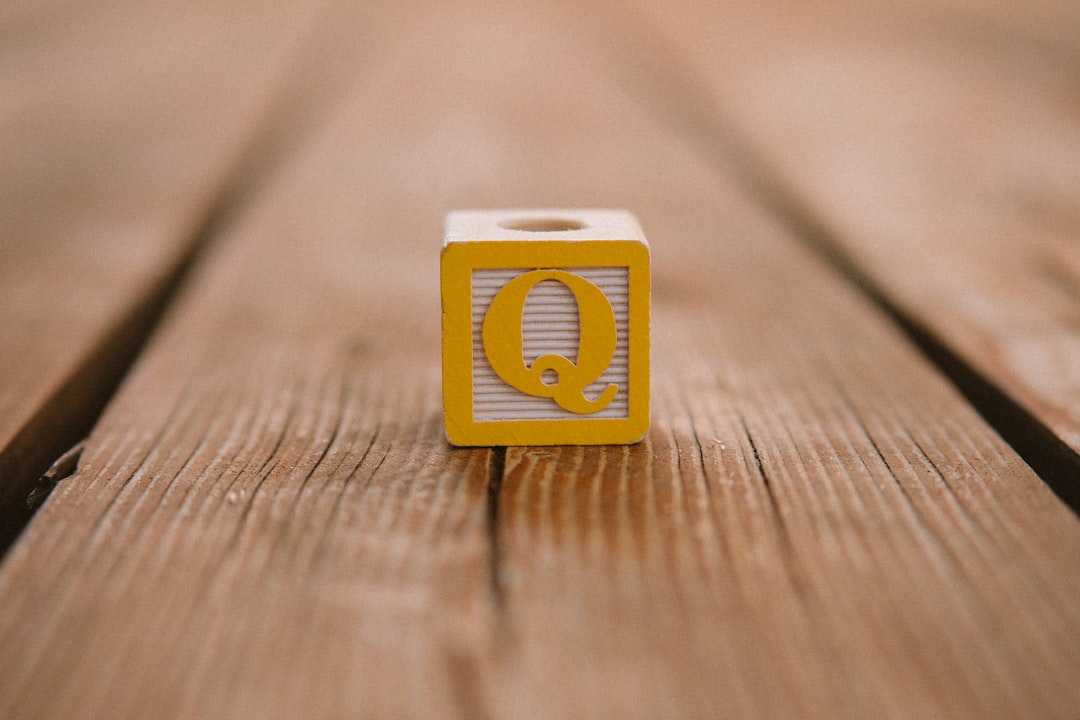

Engage prospects with a scan and streamline customer engagement with FREE QR code marketing tools by Sona – no strings attached!
Create a Free QR CodeFree consultation

No commitment

Engage prospects with a scan and streamline customer engagement with FREE QR code marketing tools by Sona – no strings attached!
Create a Free QR CodeFree consultation

No commitment
The home service providers industry is rapidly modernizing as businesses search for innovative ways to connect offline interactions with online engagement. QR codes in marketing stand out as a simple yet powerful tool for transforming traditional marketing workflows, such as printed flyers, direct mailers, or door hangers, into dynamic digital experiences that drive customer conversions and help differentiate service offerings.
For many home service providers, traditional marketing often leads to missed opportunities: high-intent prospects may see a postcard, yard sign, or invoice but never take the next step, typically because they are discouraged by outdated, cumbersome processes like manual forms or hard-to-find contact information. QR codes offer a seamless pathway for homeowners to request appointments, access maintenance tips, read reviews, or even file service requests with a single scan, eliminating unnecessary friction and ensuring high-value prospects are never lost simply because their engagement went untracked.
With the right strategy, QR code marketing helps address common pain points, such as missing out on leads who hesitate to pick up the phone or the lack of visibility into who is interacting with print collateral. By making scans measurable, capturing valuable prospect data, and streamlining critical touchpoints like scheduling and feedback collection, QR codes empower home service businesses to personalize the customer journey and drive sustainable growth.

Home service providers often struggle with manual intake processes and paper sign-up sheets that make it easy for promising leads to slip through the cracks. QR codes create a fast bridge between physical touchpoints and online actions, capturing demand at the moment of interest and guiding prospects to a single, clear action like booking or requesting a quote. When integrated across a campaign, QR codes replace slow, analog steps with automated, trackable workflows that increase both conversion rates and operational efficiency.
Replacing outdated analog processes is key to unlocking results. Printed brochures with phone numbers give no insight into engagement; QR-enabled flyers, postcards, and yard signs can lead to pre-filled forms that auto-sync to a CRM. Manual sign-up sheets at local events are easy to misplace; a scan-to-sign-up flow with Sona QR creates instant records and triggers follow-up emails. Sticky notes on refrigerators remind people to call for seasonal maintenance; a magnet with a QR code routes them to a one-click booking calendar, increasing on-time tune-ups and repeat business.
To execute effectively, define clear success metrics before launch. For example, target a 20 percent lift in quote requests from door hangers or aim to double review submissions from invoices. Track scan-to-conversion rates, average time from scan to booking, and repeat booking rates, then refine your creative, placements, and destinations to hit your goals. Over time, scan data will highlight which neighborhoods, services, and offers drive the best returns.

Often, home service businesses pour resources into print marketing only to realize they have little visibility into which efforts actually generate leads. A beautiful postcard or yard sign might generate interest, but without a clear digital path the intent dissipates. QR codes transform passive offline touchpoints into interactive, trackable gateways that capture interest precisely when it happens. A homeowner who scans a truck decal in their driveway can request an estimate on the spot, and your team can follow up before competitors reach them.
QR codes also address the challenge of speed and simplicity. Homeowners do not want to navigate complex websites or search for buried contact information. A single scan can load a mobile-optimized booking form, offer instant chat support, or prefill an email to your service desk. This simplicity leads directly to better conversion rates and fewer abandoned interactions. With dynamic QR codes from platforms like Sona QR, you can update destinations without reprinting, test multiple offers, and route traffic to the right service based on seasonality or regional needs.
Trackability is another advantage that matters in this vertical. Unlike static print materials, QR codes provide granular analytics such as number of scans, time of scan, location, channel, and device type. That means you can evaluate which materials drive the most engagement, which neighborhoods respond to certain offers, and what timing increases scan rates. When you integrate Sona QR with a CRM, each scan can enrich a contact profile and trigger automated workflows like appointment reminders, annual tune-up prompts, or referral programs.
Finally, QR codes are cost efficient, which counts in markets where margins can be tight. You can create and deploy codes quickly across appointment cards, yard signs, door hangers, invoices, work orders, community bulletin boards, and local event signage. As you scale, the data compounds in value, and your offline marketing transitions from guesswork to evidence-based investment.

Home service firms frequently miss out on segmenting their audience when all traffic is lumped together or when critical account data is incomplete. Selecting the right QR format for the right destination helps you streamline actions and capture useful metadata. Focus on formats that match your most common tasks such as booking, quoting, contact saving, and app access.
Dynamic QR codes are especially valuable. If your summer schedule fills up or a winter promotion changes, you can update the destination instantly. You can also append UTM parameters for channel attribution, split test landing pages, and rotate offers by region or season. The result is better personalization without additional printing costs.
With Sona QR, these formats are easy to generate, manage, and track in one place. You can organize codes by campaign, service line, or geography, and report on performance in a unified dashboard.

It is common for home service providers to wonder why promising leads never materialize after a marketing push. Often, the problem is not reach but follow-through. High-intent prospects see a truck in their neighborhood or a door hanger at the right moment, yet there is no convenient digital next step, so interest fades. Strategic QR placements close that loop, capturing attention at the exact moment it is most valuable and turning drive-by curiosity into booked service.
Think about the physical spaces and printed assets that already have your brand on them, then add a clear, benefit-driven call to action and a QR code that delivers on that promise. Incentivize scans with time-limited offers, neighborhood discounts, or free checklists. Use dynamic codes so your message stays aligned with seasonality and service availability. Consider proven channels like direct mail, yard signs, and leave-behinds to maximize local response.
Modern tools like Sona QR help you identify which placements generate the strongest signals. Over time, you can double down on high-performing formats, test new creative, and scale proven tactics across additional neighborhoods or service lines.
The inability to reconnect with motivated but non-converting prospects is a major frustration for providers. A homeowner may visit your website but not book, or they may keep a flyer on the counter without calling. QR codes re-open that channel by placing fast digital actions at natural touchpoints in the offline journey. The result is more bookings, higher-quality leads, and a clearer picture of what drives conversion.
When mapping use cases, think buyer journey. Awareness often happens on the street or in the mailbox. Consideration may happen at the kitchen table with family input. Conversion can be sparked by a convenient mobile flow and a trust signal like reviews. Use QR codes to support each stage with a single, obvious action.
As you deploy these use cases, personalize destinations with service-specific content and neighborhood context. For example, show roofing examples from the same ZIP code or HVAC maintenance tips that match the season. Personalization raises relevance and conversion rates.
Each QR scan is a signal: location, timing, device, and intent. By deploying unique QR codes across touchpoints and tagging them by use case, you can build segmented audiences for retargeting across email, SMS, and paid media. This approach ensures you allocate budget to real decision-makers rather than broad demographic guesses.
Start by defining your journey stages and the corresponding QR codes. Top-of-funnel scans on door hangers might signal general interest in a service category, while mid-funnel scans on estimates indicate purchase consideration. Post-service scans on invoices can differentiate satisfied customers who are primed for referrals or maintenance plans. Sync these audiences into your CRM and ad platforms to automate follow-up at scale. For campaign activation, see Sona’s retargeting playbook.
For home services, consider distinctions like homeowners vs. property managers, warranty customers vs. new prospects, and emergency responders vs. planned maintenance seekers. These differences influence messaging, urgency, and offers in ways that improve response and conversion rates.
QR codes are more than convenient links. They create continuity between offline and online experiences, enabling attribution and faster action across every channel you already use. When you integrate QR into your core marketing mix, you remove friction, gather actionable data, and accelerate movement from awareness to conversion.
Focus on the channels that dominate home services. Direct mail remains influential for neighborhood outreach. Vehicle wraps and yard signs build in-market credibility. Brochures, magnets, and invoices live in the home and can drive repeat engagement. By using dynamic QR codes, you turn each of these assets into a flexible touchpoint that can adjust to demand and availability.
QR codes function as the offline onramp to your digital marketing engine. With a centralized platform like Sona QR, you can manage all codes from one dashboard, monitor performance in real time, and sync scan data with your CRM and ad platforms for closed-loop attribution.
Launching a QR campaign is straightforward when you break it into clear steps. Start with a focused goal, choose the appropriate QR type, and design for scannability. Then deploy across high-impact placements and iterate using performance data. Treat your QR program like an always-on growth loop that evolves with each test.
Give each campaign a single, unmistakable call to action. For example, “Scan to request your free roof inspection” or “Scan to book this week’s AC tune-up.” The more specific and benefit-led your message, the higher your scan and conversion rates.
Define the outcome you want. Examples include appointment booking for seasonal services, instant quote requests for emergency repairs, or review collection after job completion. Align your CTA to a single action and make sure the destination matches user expectations.
Customize the goal for your vertical and context. A landscaping company might run “Scan to schedule a spring yard assessment,” while a plumbing firm may use “Scan for 24-hour emergency help.” Clarity sets the stage for measurable success.
Choose static codes for fixed destinations like a brochure PDF or a general contact page. Static codes are simple, but they cannot be edited after printing and offer limited tracking.
Choose dynamic codes for trackable, editable links and campaign optimization. Dynamic codes through Sona QR let you update destinations without reprinting, add UTM parameters, segment by placement, and unlock retargeting. If you need data and flexibility, dynamic is the right choice.
Incorporate brand colors, a logo, and a clear frame or label that tells people exactly what they will get by scanning. Place the CTA near the code and keep the wording action oriented and benefit focused. See these QR marketing ideas to inspire testing.
Test thoroughly before launch. Check scannability on iOS and Android, from multiple angles, distances, and under different lighting conditions. Validate that short URLs resolve quickly, pages are mobile optimized, and tracking parameters are recorded correctly in analytics and CRM systems.
Prioritize placements that reach engaged audiences: vehicle wraps, door hangers, local mailers, invoices, yard signs, community boards, and event booths. Match the creative to the context and distance. For example, use larger codes and short CTAs on vehicles and yard signs; use smaller codes with more supporting copy on brochures and invoices.
Map each placement to a corresponding destination. Service area signage might route to a neighborhood-specific page with nearby project photos. Invoices might route to a review page with one-click rating options. This alignment improves relevance and conversion.
Use Sona QR to track scans by time, location, and device. Monitor conversion metrics like scan-to-booking rate, scan-to-quote rate, and review submission rate. Watch for drop-off points to diagnose friction.
Run A/B tests on CTAs, landing page headlines, form layouts, and incentive offers. Iterate fast by updating destinations on dynamic codes without reprinting. Feed insights into your CRM for retargeting and into your planning for the next campaign cycle.
A centralized management platform empowers your team to run this cycle efficiently. With every iteration, your offline-to-online funnel becomes more precise, and your marketing spend yields higher, more predictable returns.
For home service providers, incomplete data undermines personalization and revenue attribution. Traditional analytics might show traffic spikes, but they rarely reveal which door hanger, yard sign, or invoice generated the best leads. Advanced QR tracking closes that gap by connecting offline scans to online actions, CRM records, and ultimately to revenue.
To make this work, define what success means for each code: booked appointments, quotes requested, reviews collected, or maintenance plans sold. Connect your QR platform to your CRM so that scan events populate contact records, trigger workflows, and update lead scores. This integration gives you a clear line of sight from first scan to closed job and beyond.
When you link QR engagement to the complete customer journey, you can identify upsell opportunities, predict buying readiness, and reduce churn through timely interventions. Over time, your marketing decisions become less about intuition and more about evidence.
Many providers launch QR codes once, then forget to refresh them. As offers change and seasons shift, outdated codes can confuse customers and waste traffic. The most successful teams treat QR programs as a living system: new placements, new offers, and ongoing optimization driven by scan data.
Focus on tips that match your most common media and core KPIs. For home services, that usually means direct mail, vehicle signage, yard signage, invoices, and leave-behind materials. Small execution details like CTA clarity, code size, and landing page speed have outsized impact on outcomes.
You can generate and track your first QR codes with Sona QR. Start creating QR codes for free.

The consequences of incomplete tracking or disconnected channels are evident in providers who see growth plateau despite significant marketing investments. By integrating QR codes into everyday touchpoints and measuring what happens after each scan, businesses create feedback loops that steadily improve bookings, reviews, and retention.
Consider a few examples that illustrate the possibilities. A plumbing business added QR codes to vehicles and discovered which neighborhoods produced the most scan-to-call conversions. Within one quarter, they reported a 30 percent rise in site visits from local traffic and a 20 percent lift in service calls. A cleaning provider attached scannable codes to invoices and introduced a “Scan to rebook in 60 seconds” flow, which led to a 40 percent increase in repeat appointments. A roofing firm deployed QR-enabled yard signs at active job sites, capturing neighbors who were already primed by visible proof of quality. Their follow-up emails featured nearby project photos and financing options, which shortened sales cycles and improved close rates.
For other service verticals, see these senior care QR tips.
Industry leaders emphasize that the value behind each scan must be clear. If customers do not know what they will get, they will not take the extra step. Avoid burying the call to action in dense copy. Instead, use a large, benefit-driven statement like “Scan for a free energy efficiency checklist” or “Scan to book for this week.” Clarity increases scans, and speed increases conversions, so ensure the destination page loads quickly and works well on mobile.
Common pitfalls include pointing multiple codes to the same generic homepage, which makes attribution impossible, or letting dynamic codes expire without updates, which sends customers to irrelevant pages. Another frequent mistake is failing to train staff. When technicians, estimators, and office teams can confidently explain why scanning helps the customer, adoption improves significantly. Finally, do not let audience data go stale. If you ignore segmentation, your follow-up will be generic and less effective.
The integration of QR codes into home service provider workflows is reshaping the industry by addressing persistent challenges like lost leads, insufficient engagement tracking, and missed opportunities for personalization. When your QR strategy is intentional and measurable, friction disappears at key touchpoints, offline and online experiences connect, and your team gains the visibility needed to make smarter marketing decisions. Over time, that translates into more bookings, stronger reputation signals, and a more resilient pipeline.
Professionals who embrace QR-driven transformation position themselves to meet evolving homeowner expectations. They capture every valuable interaction, convert curiosity into conversations, and maintain growth even in competitive markets. If you are ready to start, create a dynamic code with Sona QR, link it to a focused call to action, and place it where intent already exists. Then measure, learn, and iterate until every scan becomes a step toward revenue.
QR codes have transformed home service providers from traditional marketing to dynamic, data-driven growth engines. Whether it’s attracting new clients, streamlining booking processes, or enhancing customer satisfaction, QR codes enable instant, mobile-friendly connections that turn everyday touchpoints into powerful conversion opportunities. Imagine instantly knowing which flyers, vehicle wraps, or door hangers lead to booked appointments—and being able to optimize your campaigns on the fly.
With Sona QR, creating dynamic, trackable QR codes is effortless. Update campaigns anytime without reprinting materials, monitor real-time engagement, and link every scan directly to revenue growth. No missed leads, no guesswork—just smarter marketing that drives measurable results in a competitive home services market.
Start for free with Sona QR today and transform each scan into a loyal customer and a growing business.
You can find reliable home service providers by scanning QR codes on local marketing materials such as vehicle decals, yard signs, and door hangers that link to service profiles, reviews, and booking options.
Best practices include using dynamic QR codes on print collateral to provide real-time offers, digitizing lead capture with trackable forms, personalizing customer journeys, integrating QR data with CRM systems, and testing and optimizing campaigns based on scan analytics.
QR codes improve engagement by offering seamless, one-scan access to appointment booking, estimates, maintenance tips, reviews, and feedback forms, reducing friction and enabling measurable interactions that encourage repeat business.
Benefits include transforming offline touchpoints into interactive gateways, capturing high-intent leads instantly, enabling dynamic content updates without reprinting, providing detailed analytics for better marketing decisions, and automating follow-ups to increase conversions.
Providers can streamline operations by integrating QR code scan data with CRM and marketing platforms to automate workflows like appointment reminders, service follow-ups, and customer segmentation, while replacing manual intake processes with digital, trackable forms.
Use Sona QR's trackable codes to improve customer acquisition and engagement today.
Create Your FREE Trackable QR Code in SecondsJoin results-focused teams combining Sona Platform automation with advanced Google Ads strategies to scale lead generation

Connect your existing CRM

Free Account Enrichment

No setup fees
No commitment required

Free consultation

Get a custom Google Ads roadmap for your business






Launch campaigns that generate qualified leads in 30 days or less.
